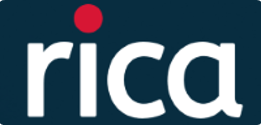Proposal for Migration from the Municipal Collection System to the Tax Administration System for Serra Gaúcha City Halls
Keywords:
System migration, Governmental system, Business and IT alignmentAbstract
Several cities of Rio Grande do Sul hsve their tribute system based on COBOL language called SAM. SAM is a legacy system because it was developed ten years ago. In this version, is it not possible to integrate it with web applications. For this reason, it is necessary carry out a system migration, which requires carefully planning and execution since the service for the community cannot be interrupted. The present paper describes a methodology for software migration based on PMBOK (Project Management Body of Knowledge) Guide to establish the IT alignment with the city hall process.
References
LAURINDO, F. J. B. Tecnologia da Informação: planejamento e gestão de estratégias. São Paulo, Atlas, 2008.
HENDERSON, J. C.; VENKATRAMAN, N. Strategic alignment: leveraging information technology for transforming organizations. IBM System Journal, NJ, USA, v.32, n.1, p.4-16, 1993. Disponível em: <http://dl.acm.org/citation.cfm?id=1663583>. Acesso em: 01 mar. 2017.
MCCRACKEN, D. D. A simplified guide to structured COBOL programming. John Wiley & Sons, Inc., 1976.
AGILAR, E. V. Uma abordagem orientada a serviços para a modernização de sistemas legados. 2017.
PMBOK. Project Management Institute: Guia do conjunto de conhecimentos em gerenciamento de projetos. 5. ed. São Paulo: Project Management, 2010.
ELMASRI, R.; NAVATHE, S. B. Sistemas de Banco de Dados–Fundamentos e aplicações, tradução da 6a. ed. 2011.
NEVES, Marcelo Menezes. CBAP Master: Aprenda Análise de Negócios e conquiste a certificação CCBA/CBAP. Brasport, 2014.
OLIVEIRA, C. L. C.; LAURINDO, F. J. B. Strategy and the internet: case studies in Brazilian companies. Production, v. 26, n. 1 p. 145-159, 2016.
Downloads
Published
How to Cite
Issue
Section
License
Copyright (c) 2021 Interdisciplinary Journal of Applied Science

This work is licensed under a Creative Commons Attribution-NonCommercial-NoDerivatives 4.0 International License.
Authors keep the copyright and cede to the journal the right of publishing first. Published works are licensed under a Creative Commons Attribution 4.0 International (CC BY 4.0) license, allowing the sharing of the work with recognition of the authorship and initial publication in this journal.






